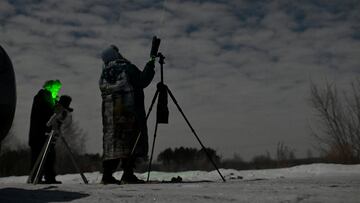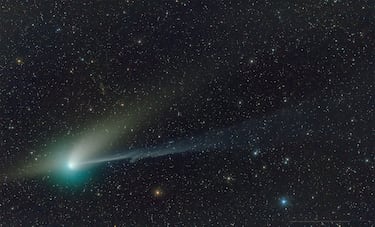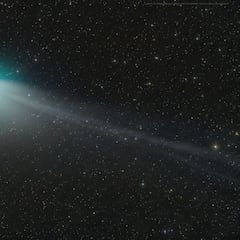What do you need to see the green comet? Telescope, binoculars, camera...
The rare astronomical spectacle will not be visible for much longer. Here’s how to get a good look at the distinctive green comet.


Throughout this week the comet C/2022 E3 (ZTF) will be visible from the United States, offering a once-in-a-lifetime peak at the rare green comet. Star-gazers have had their heads turned to the sky to get a good view of the phenomenon and Thursday evening/Friday morning could be the last big chance to see it clearly.
So how can you give yourself the best chance of seeing it with your own eyes?
Gauging comet brightness in advance is notoriously tricky. It can vary wildy, depending on a wide range of factors from light pollution to cloud coverage. For most of this week the comet has been visible to the naked eye for some onlookers, but it is difficult to appreciate the striking colour without some equipment.

To boost your chances it is advised that you use binoculars or a telescope. This gives you the best opportunity to see the comet’s distinct green hue and rare anti-tail. There have been numerous great shots taken on cameras that capture the comet in the night’s sky, but being able to do so will depend both on the quality of the camera and the skill of the photographer.
When is the comet closest to earth?
The green comet only passes through the solar system once every 50,000 years or so, so you might want to make the most of it. The comet will be closest to earth on the evening on Thursday, 2 February. Even at this point, however, it will be around 26.4 million miles from the planet.
Follow along...
Related stories
It may be difficult to pick up the greenish hue with bare eyes and the sight of the comet in real life will be much more faint that pictures circulating online.
The green colouring comes from the chemical make-up of C/2022 E3 (ZTF). The comet is a frozen mass of space dust and gases, which includes a molecule known as diatomic carbon. This structure, with two carbon atoms fused together, emits a green light.

